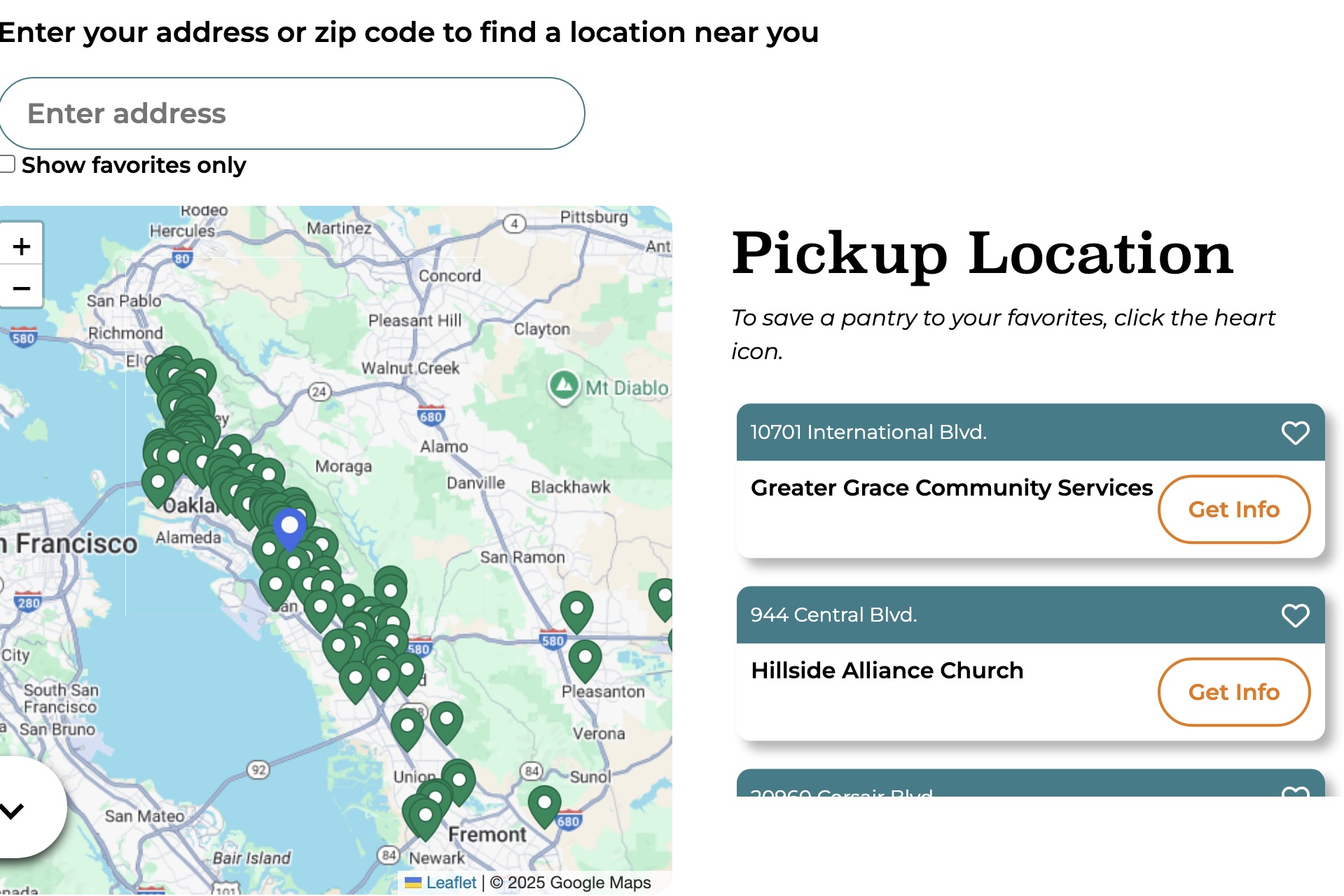GraphQL Migration on a Shoestring
👤 Client: Alameda County Community Food Bank • 🎭 Role: Lead Developer • ⏳ Duration: 3 months (incomplete, 2023-2024)
🧑💻 Tech: Faust.js, GQty → Apollo GraphQL, React, Leaflet Maps, Location Services


⚡ Challenge
I took over a headless WordPress site for Alameda County Community Food Bank. It was built with an outdated Faust.js v1 stack and GQty, a GraphQL client that used “invisible renders” to guess what data a component needed.
This resulted in a black box full of hidden complexity that made even small updates risky. On top of that, we had just 10 hours a month (nonprofit budget limits) to get everything migrated to Faust.js v2 and Apollo GraphQL.
🧩 Solution Architecture
I laid out a migration strategy that swapped Faust.js v1/GQty for Faust.js v2 with Apollo GraphQL and Next.js routing. This was not a simple upgrade. It meant moving from GQty’s “magic” automatic queries to Apollo’s explicit, handwritten queries.
We built a replacement site alongside production and migrated piece by piece. I also documented the mindset shift so the team could follow along, moving from implicit “ghost data” patterns to explicit, predictable query logic.
🛠️ Technical Approach
The old GQty setup created unique headaches:
-
No real loading states. Undefined data could mean “still loading” or “null.”
-
“Ghost data” during first renders made the UI behave oddly.
-
Automatic query generation meant nobody wrote queries directly, which hid what was actually happening.
Migrating to Apollo meant rewriting every data call. I wrote explicit queries, added proper loading and error states, and replaced workarounds with clean handling logic. Components that relied on GQty’s auto-generated nested queries needed the most care.
I created a detailed roadmap, breaking down migration complexity by component and documenting each pattern conversion.
🎯 Impact
The components we migrated instantly became easier to debug and maintain. Apollo’s explicit loading states made the app’s behavior transparent instead of mysterious.
The documentation gave the team clear steps for converting the rest, even within a limited budget. The project turned a fragile, hidden system into one with predictable, maintainable patterns.
💡 Conclusion
This project highlighted how different GraphQL clients can have completely different mental models, even when achieving similar end results. GQty's "magical" automatic query generation was impressive but created a black box that was difficult to debug plus maintain.
The migration taught me that sometimes the most valuable contribution is not writing code. It is documenting shifts plus creating clear patterns for teams to follow. The invisible complexity of GQty made the migration much more challenging than a typical dependency update, but also more valuable in terms of long-term maintainability.
Working within the 10-hour monthly constraint forced me to focus on documentation plus planning over implementation. This ultimately provided more value to the organization than any individual component rewrite could have.